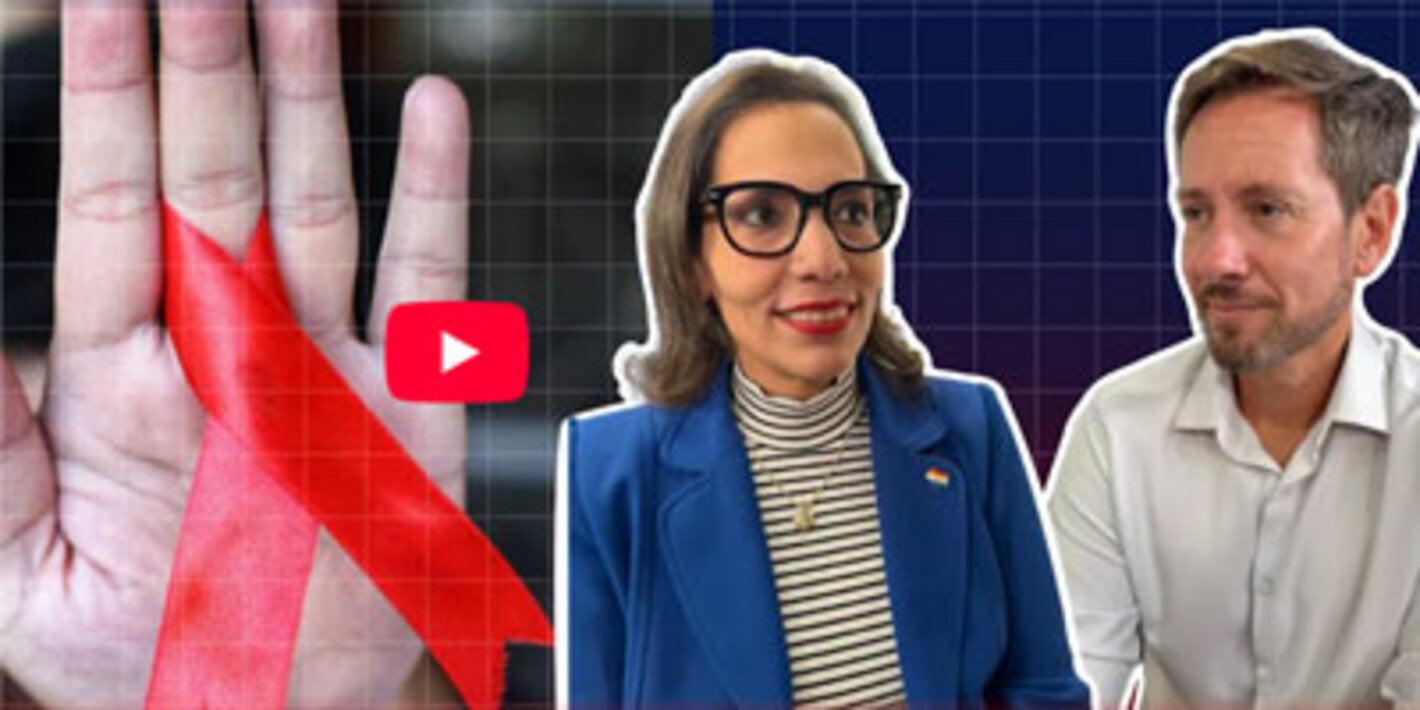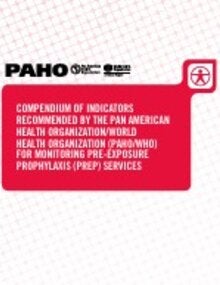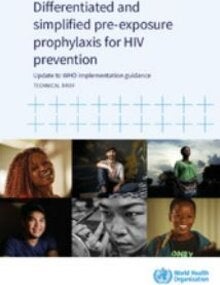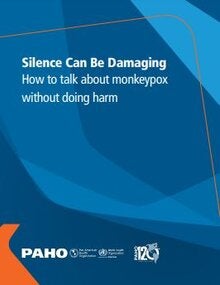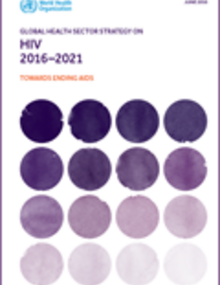SUBMENÚ
Pre-Exposure Prophylaxis (PrEP)
Pre-exposure prophylaxis (PrEP) is a drug intervention to prevent HIV. When used correctly, following a physician's prescription, these drugs can reduce the risk of contracting HIV by up to 99%. PrEP is for HIV-negative adolescents or adults who are exposed to the virus through sex or injecting drug use.
Current guidelines of the World Health Organization (WHO) refer to two forms of oral PrEP: daily (continuous) and on-demand (intermittent) use.
The daily modality requires that all persons at risk of acquiring HIV take antiretroviral drugs every day. The on-demand modality follows a 2-1-1 scheme: a dose of the medication is taken 2 to 24 hours before possible exposure to HIV, followed by additional doses 24 and 48 hours after exposure.
It is important to note that, unlike on-demand PrEP, continuous PrEP is indicated exclusively for cisgender men and trans or gender-diverse individuals assigned as male at birth, provided they are not in treatment with exogenous estradiol-based hormones.
Both PrEP modalities are highly effective in preventing HIV.
PrEP is highly effective and is an additional option for preventing HIV infection.
In July 2017, WHO published a tool for implementing PrEP programs, with guidance on the introduction and use of PrEP based on available evidence and experience. This document includes information on PrEP not only for clinicians, but also for educators, advocates, counselors, opinion leaders, pharmacists, regulatory agencies, planners, evaluators, persons administering diagnostic tests, users, adolescents, and young adults.
The recommendations have been updated and new modules have been integrated into the WHO tool, seeking to integrate PrEP and STI management, while enhancing diagnostic and treatment options for individuals.
In addition, new PrEP options have been included, such as the dapivirine vaginal ring and long-acting injectable cabotegravir.
- By the end of 2023, oral PrEP was offered under public health policies in 24 countries in Latin America and the Caribbean. Another eight countries were in the process of planning implementation with different service delivery modalities and funding sources.
- The Joint United Nations Program on HIV/AIDS (UNAIDS) estimates that 2.3 million people in Latin America and the Caribbean need access to PrEP. However, by the end of 2023, only 180 000 people had been reached.
Anyone who belongs to a population with a high prevalence of HIV or lives in a high-prevalence area, and who, in the last six months, has presented any of the following risk factors, is at risk of contracting HIV:
- Has had vaginal or anal intercourse without a condom with more than one partner
- Has been diagnosed with a sexually transmitted infection (STI) by a laboratory test or self-referred, or has received syndromic treatment for an STI
- Has used post-exposure prophylaxis (PEP) after sexual exposure Has had an HIV seropositive sexual partner whose viral load is unknown or not suppressed.
When offering PrEP, priority should be given to those who request it, since requesting PrEP indicates a likelihood that the person is at risk of contracting HIV.
PrEP is a method for preventing HIV, in which people at risk of HIV infection take antiretroviral drugs. PrEP significantly reduces the likelihood of contracting HIV. Currently, WHO recommends the use of PrEP taken daily or on demand, depending on the needs of different population groups.
PrEP offers up to 99% protection against new HIV infections, making it a very effective tool. It takes time for the drug to reach protective concentrations in the blood and other tissues. It is important to follow the service provider's recommendations on initiating oral intake on the daily or on-demand schedule to ensure protection. During this initial period, it is recommended to complement PrEP with other HIV prevention measures such as adopting less risky sexual practices, avoiding vaginal or anal intercourse, and using condoms.
PrEP is recommended for people in situations and periods of their lives when they may be at high risk of acquiring HIV. This method allows them to control and reduce their risk proactively.
Consider using PrEP in any of the following situations:
- If you do not use condoms consistently with all sexual partners.
- If you have or have had sex with more than one partner in the last six months.
- If you have a sexual partner who has other partners and has been or is at high risk for HIV.
- If you have unprotected sex with a person who injects drugs and shares injection materials with others, or if you share material yourself when injecting drugs.
- If you have sex when consuming alcohol or recreational drugs.
- If you have recently been diagnosed with an STI such as gonorrhea, syphilis, chancroid, or herpes.
- If your sexual partner has been diagnosed with STIs or HIV.
- If you have unprotected sex with someone who is HIV-positive but not on antiretroviral treatment or whose treatment has failed to suppress their viral load to undetectable levels.
- If you and your sexual partner do not discuss your HIV concerns or your partner does not know if they are HIV-positive.
Most of these risks will be greatest where the prevalence of HIV infection is high.
Members of the following populations may want to learn more about whether PrEP is a good option for them:
- Men and transgender people who have sex with men;
- Sex workers, especially when they cannot use condoms in all sexual relations;
- Persons in serodiscordant couples (i.e., whose sexual partner has HIV and is not receiving antiretroviral treatment or has not achieved viral suppression);
- People, including adolescent girls and young women, living in areas with a high incidence of HIV infection;
- People who use injectable drugs and share injection equipment.
- PrEP is increasingly available in many countries. Check with the local health care provider or national Ministry of Health for centers where PrEP is available.
- Inquire at a nearby health center. If they don't know about PrEP, you can show them this publication. You can also ask them to help you find out where you can get it.
- Ask your friends about PrEP and if they know where to get it.
- Ask community organizations working with the Ministry of Health in your country to learn more about PrEP.
The effectiveness of PrEP does not depend on the use of condoms to prevent HIV. However, condoms offer additional protection against HIV and also protect against other sexually transmitted infections and unplanned pregnancies:
- PrEP does not prevent STIs such as syphilis, gonorrhea, chlamydia, and hepatitis. Condoms do protect against these other infections as well as HIV, so they protect your overall sexual health.
- PrEP does not prevent pregnancy. When used consistently, condoms prevent pregnancy. There are many other ways to prevent pregnancy, including oral contraceptive pills and injectable hormones, implants, intrauterine devices, and diaphragms. PrEP does not interfere with any contraception method.
PrEP providers may include physicians, nurses, clinical officers, community health workers, pharmacists, lay and peer providers, among others, whether in clinical or community settings.
WHO-recommended dPrEP products
- Oral PrEP (tenofovir disoproxil fumarate (TDF) 300 mg + emtricitabine (FTC) 200 mg OR TDF 300 mg + lamivudine (3TC) 300 mg tablets)
- DVR (silicone vaginal ring impregnated with 25 mg of dapivirine) -- long-lasting
- CAB-LA (600 mg cabotegravir extended-release injectable suspension) - long-acting
Both PrEP options are effective in preventing HIV transmission.
To ensure that PrEP is effective in preventing HIV, it is essential to strictly follow the instructions of a health care provider. This involves adhering to the dosing schedule prescribed by the provider, whether continuous or on-demand.
PrEP does not offer protection against other STIs or prevent pregnancy.
In general, PrEP is safe and well tolerated. Side effects are usually mild, resolve on their own, and can be treated symptomatically. However, any serious side effects should be reported immediately to the health care provider.
Regular follow-up is important to support effective use of PrEP. This allows for other complementary services, such as HIV testing. The frequency of follow-up visits will depend on the PrEP product chosen.
Post-Exposure Prophylaxis (PEP)
Post-exposure prophylaxis (PEP) consists of administering antiretroviral drugs to prevent infection after possible exposure to HIV.
Timely access to PEP is the most crucial factor for its effectiveness. PEP is most effective when initiated as soon as possible, ideally within 24 hours and no later than 72 hours after exposure.
Although a two-drug regimen can be effective, a combination of three antiretroviral drugs is recommended. In addition, it is advised to provide a 28-day prescription following an initial risk assessment.
PEP and PrEP are distinct but complementary strategies. PEP is administered after exposure to HIV, while PrEP is taken before any possible exposure, to prevent infection. Both play a crucial role in HIV prevention.
Connecting the two strategies can enhance prevention efforts: PEP can act as a bridge to PrEP for people with frequent exposure to HIV. Similarly, if there are interruptions in adherence to PrEP, PEP may be used to stay protected.
WHO guidelines on PEP:
The WHO guidelines on PEP were updated in 2024. These recommendations cover all types of exposure and all population groups, including adults, adolescents, and children. Two new recommendations have been added, related to increasing access to PEP through community services and task sharing.
Evidence suggests that it is feasible to offer PEP in community settings. Successful implementation has been demonstrated in various locations, including private pharmacies and police stations, and through online platforms. PEP task-sharing, involving non-specialized healthcare workers such as pharmacists and community health workers, has also been shown to be effective and acceptable, with potential cost savings and more equitable access.
A 28-day prescription for a combination of three antiretroviral drugs should be provided for post-exposure prophylaxis following an initial risk assessment.
In adults: Tenofovir combined with either lamivudine (3TC) or emtricitabine (FTC) and with dolutegravir, which is also the preferred treatment for HIV infection.
When available, ATV/r, DRV/r, LPV/r and RAL can be considered as alternatives, along with TDF + 3TC (or FTC).
In children: ABC + 3TC is recommended as the basic regimen for HIV PEP in children <30 kg. AZT + 3TC or TDF + 3TC (or FTC) can be considered as alternative regimens.
DTG is recommended as the preferred third drug for PEP, at approved dosages. When available, ATV/r, DRV/r, LPV/r, and RAL may be considered as alternative third drug options.
The following recommendations are intended to simplify prescription plans and promote adherence to treatment:
Prescriptions: In order to improve acceptance and completion of PEP, WHO recommends providing the full 28-day course at the first visit, rather than requiring patients to return multiple times for prescriptions.
Supporting adherence to treatment: WHO recommends that programs offer counseling to improve adherence to PEP and improve completion rates.
Key Population Groups
Key populations are the groups of people most at risk and most vulnerable to contracting HIV. WHO[1] and UNAIDS[2] consider that the involvement of key populations is critical for an effective response to HIV.
- Gay, bisexual, and other men who have sex with men (GBMSM)
- Trans women
- Sex workers
- Intravenous drug users
- Prison inmates and other settings
These populations often face legal, structural, and social problems because of their sexual orientation, gender identity, profession, or other characteristics that increase stigma, discrimination, and criminalization, making them more vulnerable to HIV.
To end AIDS and achieve health for all by 2030, gaps in HIV prevention, care, and treatment services for key populations need to be addressed.
Members of these populations are also disproportionately affected by viral hepatitis and STIs, and there is growing recognition that it is important to address all three areas in an integrated, community-driven, and person-centered manner.
In Latin America, the two key populations most affected are gay men, men who have sex with men (MSM), and transgender women, who accounted for nearly half of new infections in 2017. In the Caribbean, more than one-third of new infections are among sex workers and MSM. In the context of a concentrated HIV epidemic, the recommendation is to focus efforts on combined prevention targeting key populations.
In many settings, one or more aspects of the behavior, work, sexual orientation, or gender expression of members of key populations are criminalized, and these people are subject to punitive laws and policing practices. Stigma and discrimination from the general population, health care workers, and law enforcement officers perpetuate criminalization, making changes in laws and policies difficult to achieve. Stigma and discrimination in healthcare settings are common experiences for members of key populations, presenting significant barriers to achieving universal health coverage. Key populations are generally more exposed to violence and human rights violations than the general population.
Despite this situation, HIV prevention, care, and treatment services for key populations are largely inadequate and insufficient. This makes it more challenging to reduce the number of new infections.



